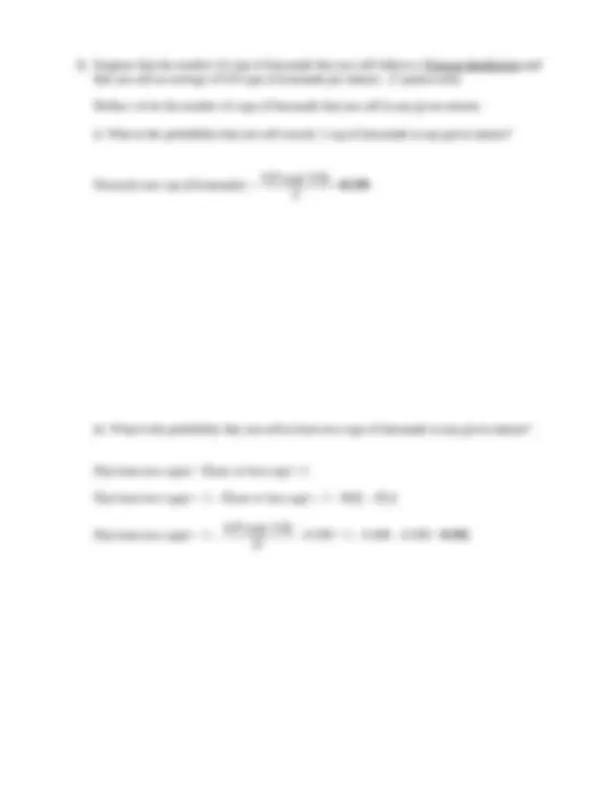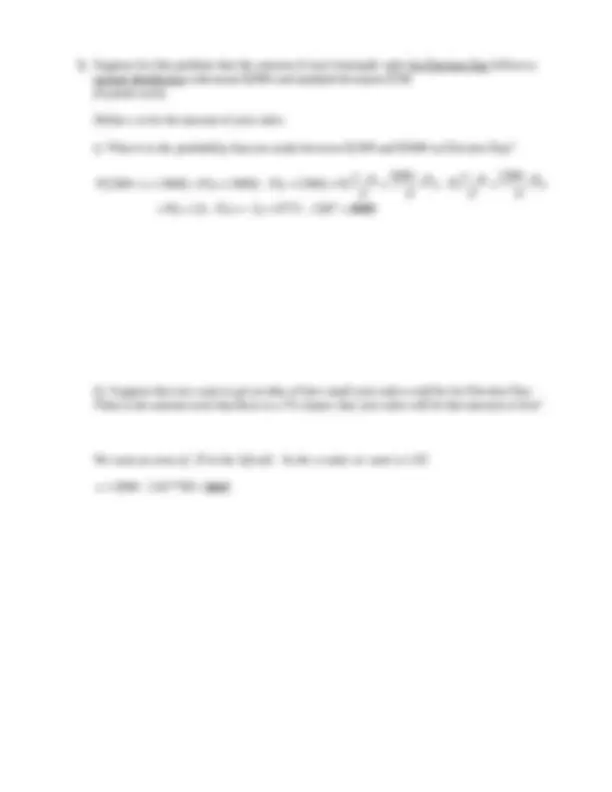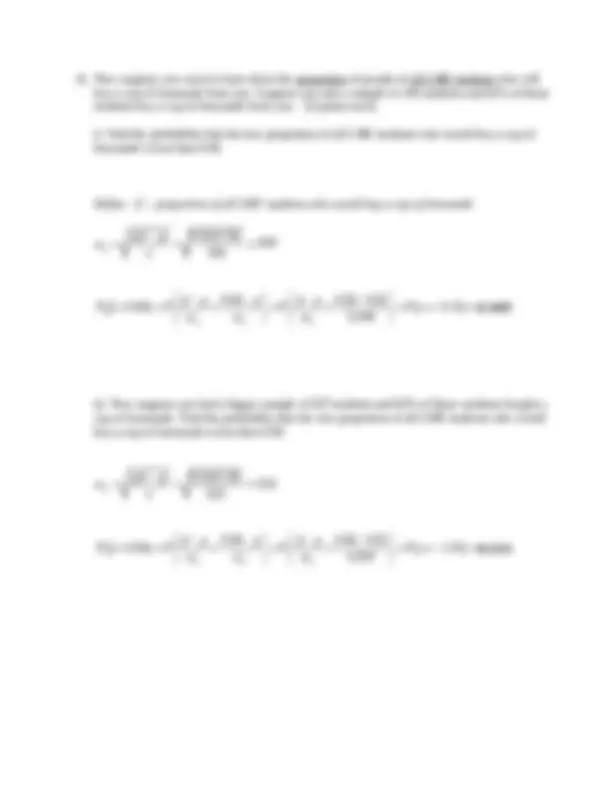





Study with the several resources on Docsity

Earn points by helping other students or get them with a premium plan


Prepare for your exams
Study with the several resources on Docsity

Earn points to download
Earn points by helping other students or get them with a premium plan
Community
Ask the community for help and clear up your study doubts
Discover the best universities in your country according to Docsity users
Free resources
Download our free guides on studying techniques, anxiety management strategies, and thesis advice from Docsity tutors
Material Type: Exam; Class: Intro Statistics; Subject: Economics; University: Loyola Marymount University; Term: Spring 2000;
Typology: Exams
1 / 7

This page cannot be seen from the preview
Don't miss anything!




ECON 230 Test 2
Name:
Section (Circle one): 9:25 10:
You will be graded based on the answers that you write below. Please make sure to include all of
your work on the sheets provided.
Answers:
i) ____________
ii) ____________
i) ____________
ii) ____________
i) _______________
ii) ________________
i) ______________
ii) _______________
i) ______________
ii) _______________
iii) _______________
Extra credit: _____________
You decide to open a business selling lemonade outside the location where LMU students are going to
vote. You need to predict the number of people who are going to show up to vote to decide how much
lemonade you need to make.
Either 1000 people could show up, 2000 people could show up, or 3000 people could show up.
The table below describes the probabilities of all the possible outcomes. (9 points each)
x = number of people
who show up
P(x)
i) What is the expected value of x , the number of people who show up?
E x ( ) 1000(0.25) 2000(0.25) 3000(0.5) $
ii) What is the standard deviation of x , the number of people who show up?
2 2 2 2
normal distribution with mean $2000 and standard deviation $700.
(9 points each)
Define x to be the amount of your sales.
i) What is is the probability that you make between $1300 and $3400 on Election Day?
x x
P x P x P x P P
P z P z
ii) Suppose that you want to get an idea of how small your sales could be for Election Day.
What is the amount such that there is a 5% chance that your sales will be that amount or less?
We want an area of .10 in the left tail. So the z-value we want is 1.65.
x 2000 1.65*700 $
buy a cup of lemonade from you. Suppose you take a sample of 100 students and 62% of those
students buy a cup of lemonade from you. (9 points each)
i) Find the probability that the true proportion of all LMU students who would buy a cup of
lemonade is less than 0.60.
Define:
p = proportion of all LMU students who would buy a cup of lemonade
ˆ
p
p p
n
ˆ ˆ ˆ
p p p
p p p p p
P p P P P z
ii) Now suppose you had a bigger sample of 625 students and 62% of those students bought a
cup of lemonade. Find the probability that the true proportion of all LMU students who would
buy a cup of lemonade is less than 0.60.
ˆ
p
p p
n
ˆ ˆ ˆ
p p p
p p p p p
P p P P P z
iii) How big a sample would you need to be 98% sure that the true mean lemonade consumption for all
LMU students is between 48 cups and 52 cups? Assume that the true standard deviation is 10.
Lower end of confidence interval =
n
Now we can solve this equation for n. We get n = 136.
Extra credit: Suppose that you decide to make 2500 cups of lemonade and that it costs you $0.30 to
make each cup. You sell each cup for $0.50. If there a ¼ chance that 1000 people want to buy a cup of
lemonade at the price of $0.50, a ¼ chance that 2000 people want to buy a cup of lemonade, and a ½
chance that 3000 people want to buy a cup of lemonade, what is your expect profit? You can only sell
up to the 2500 cups of lemonade that you made. (5 points)
Expected profit =Expected sales – Expected costs =